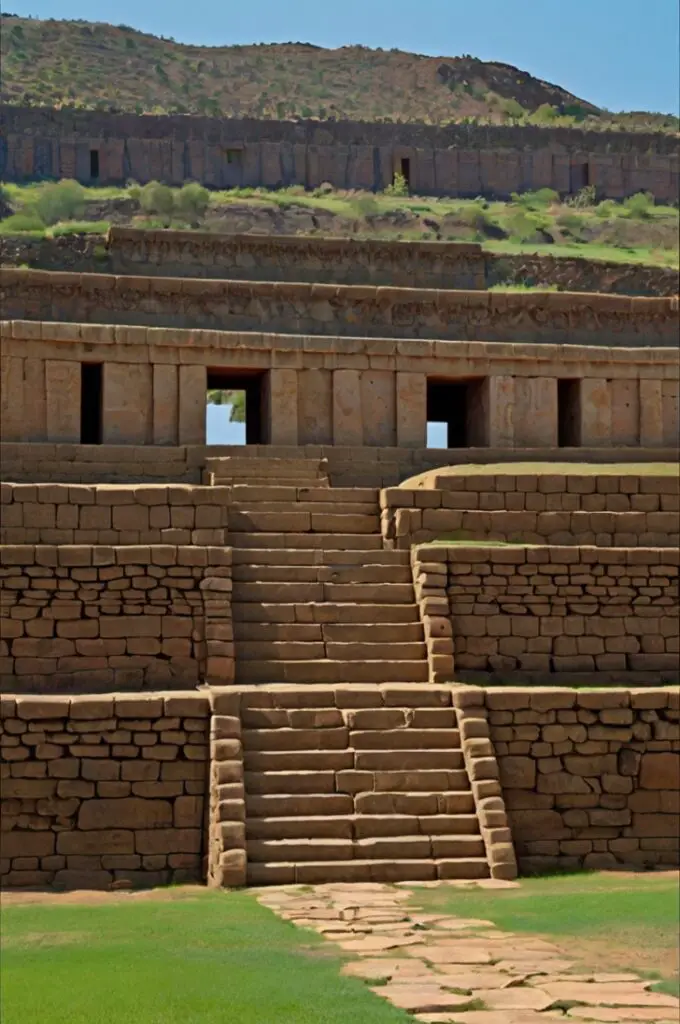
The Toltec civilization, often shrouded in mystery, played a crucial role in shaping the cultural landscape of Mesoamerica long before the rise of the Aztecs.
Known for their impressive architecture, advanced societal structures, and rich cultural practices, the Toltecs left a lasting legacy that continues to influence modern understanding of ancient civilizations.
In this post, we will explore the historical context, societal intricacies, achievements, decline, and enduring legacy of the Toltec civilization.
Historical Context
The Toltec civilization emerged around the 10th century AD and flourished until approximately the 12th century.
They are often considered a precursor to the Aztecs, who would later adopt many aspects of Toltec culture, religion, and societal organization.
Understanding the historical context of the Toltecs helps us appreciate their contributions and the influences they exerted on subsequent cultures.
Time period
The Toltec civilization is typically placed between the fall of the Teotihuacan civilization (around 650 AD) and the rise of the Aztec Empire in the early 14th century.
This period saw the development of regional powers in Mesoamerica, with the Toltecs emerging as a dominant force in central Mexico.
Geographic location
The heartland of the Toltec civilization was located in present-day Mexico, particularly in the region of Tula (or Tollan), about 50 miles north of Mexico City.
Tula became the political and cultural center of the Toltec civilization, where impressive structures and artworks continue to be discovered by archaeologists.

Society and Culture
The Toltec society was complex and multifaceted, characterized by a stratified social structure and rich cultural practices.
Social structure
Toltec society was hierarchically organized, with a ruling elite at the top.
The emperor, known as the “tlatoani,” held significant power and was considered a divine figure.
Beneath the emperor were the nobility, priests, merchants, artisans, and farmers, each playing a distinct role in society.
The working classes were responsible for agriculture and other labor-intensive tasks that supported the economy.
Religion
Religion was a central aspect of Toltec life.
They practiced polytheism, worshiping multiple gods, including Quetzalcoatl, the feathered serpent god associated with wisdom, wind, and learning.
Rituals and ceremonies were vital for appeasing deities and ensuring agricultural fertility.
Temples were constructed as places of worship, with elaborate carvings and inscriptions that reflected their beliefs.
Daily Life
Daily life for the Toltecs varied greatly depending on one’s social status.
Nobles enjoyed a life of luxury, while farmers worked hard to cultivate the land.
Agriculture, primarily consisting of maize, beans, and squash, was the foundation of the Toltec economy.
Daily activities included hunting, fishing, and crafting goods for trade.
Family units were essential, with strong ties to community and tradition.

Achievements and Contributions
The Toltecs are known for their remarkable achievements in various fields, including architecture, art, and military organization.
Architecture
Toltec architecture is characterized by grand structures and intricate designs.
Tula, their capital, featured impressive pyramids, temples, and ball courts.
The most notable structure is the Pyramid of Quetzalcoatl, adorned with stone carvings and colossal statues of warriors known as the Atlanteans.
These architectural feats not only demonstrate the Toltecs’ engineering prowess but also their religious and cultural values.
Art and craftsmanship
Toltec art is celebrated for its intricate carvings, pottery, and stonework.
They excelled in sculpting detailed figures that depicted deities, animals, and everyday life.
The iconic Atlantean figures at Tula are a prime example of their artistry.
Their craftsmanship extended to textiles and jewelry, showcasing a rich aesthetic that influenced later cultures.
Innovations
The Toltecs made significant advancements in agriculture, utilizing techniques such as chinampas (floating gardens) and irrigation systems to maximize crop yields.
Their knowledge of astronomy and calendar systems was advanced, enabling them to predict celestial events and agricultural cycles effectively.

Political Structure and Military
The Toltec civilization, which flourished in central Mexico from approximately the 10th to the 12th centuries, is known for its significant contributions to Mesoamerican culture, including architecture, art, and religion.
Here’s an overview of its political structure and military:
Political structure
Centralized authority
The Toltec civilization was characterized by a centralized political system, often believed to be led by a ruler known as the tlatoani, which means “he who speaks.”
This leader had both political and religious authority, and his role was crucial in maintaining order and governance.
Noble class
Beneath the tlatoani, there was a noble class consisting of priests, warriors, and high-ranking officials.
This elite group helped administer the various aspects of the state and participated in important religious ceremonies.
City-states
The Toltec civilization was organized into city-states, with Tula (or Tollan) being the most prominent and influential.
Each city-state operated semi-independently, but they were culturally and politically connected through trade, alliances, and shared religious practices.
Military
Warrior class
The Toltec military was composed of a professional warrior class.
These warriors held a prestigious position in society, often receiving rewards for their bravery in battle.
They were essential for expanding territory and maintaining control over conquered regions.
Military strategy
The Toltecs employed various military strategies, including the use of alliances with neighboring states.
They were known for their military prowess, which allowed them to conquer and exert influence over other Mesoamerican cultures.
Weapons and tactics
The Toltec warriors used a variety of weapons, such as atlatls (spear-throwers), wooden clubs, and slings.
Their tactics included ambushes and coordinated attacks, showcasing their strategic capabilities.

Decline and Legacy
Despite their achievements, the Toltec civilization faced numerous challenges that led to its decline.
Factors Contributing to the Decline
The decline of the Toltec civilization was influenced by several key factors, which together led to its eventual downfall.
Here’s a closer look at these factors:
Internal strife and political instability
As the Toltec civilization expanded, it faced increasing internal conflicts.
Different factions and rival groups began to emerge, each vying for power and influence.
This infighting weakened the political structure and created divisions within society.
When leaders were unable to maintain unity, it made it difficult to govern effectively, ultimately leading to instability and contributing to the civilization’s decline.
External threats and invasions
The Toltecs also had to deal with external pressures, particularly from the Chichimeca tribes and other groups that posed significant threats to their stability.
These invasions disrupted trade routes, which were vital for the economy, and led to conflicts that drained resources and military strength.
As outside forces attacked, the Toltec civilization found it increasingly challenging to defend itself, further weakening its hold on power.
Environmental factors
Environmental issues also played a crucial role in the decline of the Toltecs.
Archaeological evidence suggests that prolonged droughts affected agricultural productivity, making it difficult for the population to find enough food.
This decline in food resources created stress within society, leading to hunger and dissatisfaction among the people.
As the agricultural foundation weakened, it added to the overall challenges facing the civilization and contributed to its eventual collapse.
The Toltec Legacy
Despite their decline, the Toltec civilization left a profound legacy that influenced subsequent Mesoamerican cultures, particularly the Aztecs.
Many aspects of Toltec religion, art, and social organization were adopted and adapted by the Aztecs, who regarded the Toltecs as cultural ancestors.
The concept of Quetzalcoatl as a central deity continued to play a significant role in Aztec mythology.
Final Thoughts
The Toltec civilization stands as a testament to the complexity and richness of ancient Mesoamerican cultures.
Through their achievements in architecture, art, and societal organization, the Toltecs significantly shaped the historical narrative of the region.
While their civilization ultimately declined, their influence endures in the cultural practices and beliefs of later civilizations.



